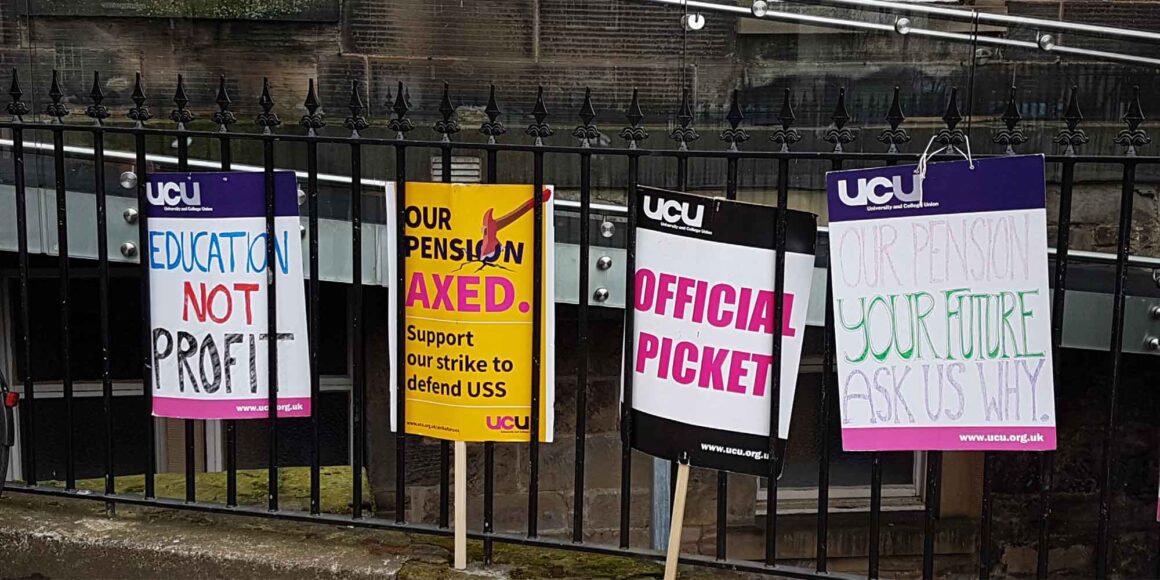

THE UNIVERSITY and College Union (UCU) has confirmed a new wave of strike action at 68 universities in February and March.
This follows the three-day strike last December in defence of their USS pension scheme and for better pay and working conditions. Since then, twelve further branches have beaten the anti-union legal threshold of 50% (out of 42 balloting) to vote yes and join the walkouts, showing strikes are the best way to build workers’ militancy. Now the UCU has upped the ante and announced ten days of strike action in February.
Setbacks
Unfortunately despite these steps forwards, the escalation is not straightforward as the union leadership have backed away from a united struggle. At a Higher Education Committee (HEC) meeting on 18 January, a motion calling for escalating and indefinite action was narrowly voted down. This was despite strong support from the Branch Delegate Meetings (BDMs) the previous evening for escalating strike action, reflecting much more closely the attitude of rank and file staff on the ground. Instead, the HEC overrode this and passed a series of recommendations that effectively decoupled the pension dispute from the ‘Four Fights’ dispute over pay, equality, workload and casualisation, contravening a motion passed at Congress to keep the disputes ‘coupled’.
This decision prompted an open letter from UCU branch delegates (mostly UCU Left supporters) to HEC members politely enquiring how they voted on the motions and expressing concerns about the decision-making process in the union. It further made the point that the decisions taken at HEC did not reflect the BDMs’ expressed support for escalation and keeping the two disputes together.
Following the HEC meeting, UCU general secretary Jo Grady outlined a set of new proposals offering the USS Joint Negotiating Committee (JNC) a ‘way out’ of strike action. With negotiations due to begin in early February, the union leadership finally announced ten days of strike action beginning on 14 February. Many of the strike dates, however, fall during reading week or half-term, causing minimum disruption to university management. And without escalating up to indefinite action, universities can reschedule lecturers and could even threaten those refusing with docked pay.
SOLIDARITY ON THE UP
Since December’s strike there have been two very positive developments.
Confrontations between management and staff over pay and conditions saw Unison ballot their members in Higher Education over a measly 1.5% pay offer – a real-term pay cut when inflation is taken into account. Nine universities will be striking on pay and three on pension attacks – Leeds university over both – and elsewhere UCU and student pickets can still encourage Unison members not to cross.
And attempts university management to drive a wedge between staff and students have been countered by student solidarity groups, and now the NUS has called a national student strike on one of the strike dates, 2 March. If student and staff activists work together, this has the potential to both shut down campuses and lay the basis for future joint struggles against the corrosive experiment in education marketisation.
STAY ON TRACK
Escalating strike action beyond symbolic strikes lasting a few days is key to winning this dispute. With the attempted sell-out of the 2018 dispute still fresh in many members’ minds, the latest manoeuvrings from the leadership underline the importance of rank and file control of the strikes.
UCU Left’s latest branch motion calling for an urgent meeting of branches to coordinate and propose industrial action is very welcome. More concretely, activists should call for the meeting to elect a recallable strike committee to keep the dispute on track and watch the union leaders, guarding against capitulation. Workers can use the picketlines to take the initiative and elect a strike committee themselves, and network with other strike committees to add an extra level of pressure on UCU leaders to up the action, or prepare to take action without them if necessary.